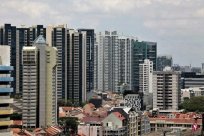Source: Bloomberg
China ’s two sessions in 2023 are the first two sessions since the epidemic prevention and control. This year’ s growth target is set at about 5%, and it has almost no signal that sacrifices a large -scale stimulus action in the past.
The following is the information that the commodity and energy market need to know:
What are the economic plans in the post -epidemic era?
The government has reiterated that it is hoped to promote economic growth by improving domestic consumption and positive fiscal policies.However, for the long -term stimulus that hopes that the government has introduced more strong stimulus after the economy is re -opening, the official position that the economic growth goal in 2023 will disappoint them.
Although the Chinese government promises to increase national expenditure and increase the fiscal deficit rate, about 5%of the economic growth target is located in the recent market expectations.This year, the scale of local government bonds is also milder, indicating that the government seeks a balance between the necessity of supporting the economy, the status quo of the local area, and the need to prevent the price of commodities from soaring.
The official documents released on Sunday all show that the government will have a large -scale interest in the economy as a large -scale stimulation of the economy as the government is after the financial crisis.Beijing's support operations promoted the soaring heights such as copper and iron ore in 2021, and later forced regulatory departments to intervene.
Investors may find a little comfort in the wording of stimulating consumption reports, which is good news for large products that can benefit from consumer expenditures, such as oil and agricultural products;EssenceThe People's Bank of China had previously reiterated the implementation of a stable monetary policy. With the rise of the economy, consumer confidence and investment will improve.
What are the priority attention to the commodity market?
China's dependence on overseas supply in food and required raw materials has always been the government's concerns, which has a long history in terms of policy.However, the impact of the epidemic and the Russian and Ukraine War became the point of concern this year.
Some projects that can improve energy and food security will receive some additional investment, including improving food production capacity.The government also hopes to enhance the domestic supply capacity of raw materials such as iron ore and lithium.
Increased defense expenditure is also a big concern, and although purchasing may become highly sensitive, it may increase the demand for rare earth and other metals for weapons.
What is the environment and climate policy?
The goals of the environment include setting the unit's domestic GDP's energy consumption target to reduce by about 2%, and emphasize that the discharge volume of major pollutants will continue to decline, focusing on controlling fossil energy consumption, and steady improvement of ecological environment quality.
In addition, the construction of the second batch of large -scale wind power photovoltaic base projects is actively promoted, the third batch of project approval is promoted in an orderly manner, and the energy storage industry is developed.In addition, the severe cracking down on carbon emission data will also be the government's priority task. China has stated that it will do a good job of the second performance cycle management of the national carbon emissions trading market and improve the trading system of the carbon emission right market.
What is the prospects in the field of real estate and infrastructure?
This year, it plans to arrange 3.8 trillion yuan in local government bonds. This goal is higher than the 3.65 trillion yuan of the 3.65 trillion yuan determined by the two sessions last year.The actual new scale.According to Bloomberg economic research estimates, based on these arrangements, the general budget deficit issued by general budget deficits and local government special bonds is 5.9%of GDP, compared with 5.8%in 2022; higher than Bloomberg economic research previously estimated.
Infrastructure accounts for the largest proportion of steel consumption in China, so the industry will especially benefit more public projects that promote the economic recovery and resolve the real estate market crisis.
However, as the expenditure model has shifted from the old economy to the new economy, the investment type is changing.This means that investment may flow to solar power fields, energy storage facilities and power grid expansion, and less dependent on steel and cement investment.Energy transformation is crucial.
The government's support for the real estate market is not clear.The real estate market accounts for about one -third of China's steel demand, and the demand for basic metals such as copper, aluminum, and zinc has reached one -fifth.Li Keqiang pointed out in a government work report that it is necessary to effectively prevent and resolve the risks of high -quality heads, improve the status of assets and liabilities, prevent disorderly expansion, and promote the steady development of the real estate industry.


